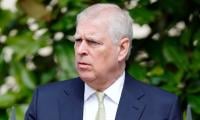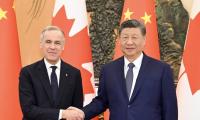The prime minister of debt
Say the word U-turn in any political discussion and everyone immediately knows who is being referred to. That is how integral the word has become to Imran Khan’s identity.
Whenever Khan makes a decision or statement of any significance, more often than not an old video clip or tweet immediately surfaces in which Khan had previously taken the opposite position on the same issue. The problem with these countless U-turns lies not only in their large magnitude but also the lack of logic or justification both for the initial position and the subsequent change.
At the outset, Khan takes an extreme position on an issue, seemingly without any regard for whether that position is rooted in any facts or if it serves any constructive purpose. Later, Khan takes a drastic U-turn by saying or doing the opposite of whatever he had earlier criticised or endorsed, without providing any cogent reason for the change or admitting he was wrong about the initial stance. The wide gulf between his strong anti-debt stance while he was in opposition, and his track record on debt accumulation during his term in office so far, serves as a prime example.
Before assuming office, Khan consistently portrayed himself as a crusader against debt. He placed debt at the core of his narrative. A country only borrows a lot if its leaders are corrupt, he often said. He also said that as PM he would never take loans or grants from other countries or the IMF. So apparently deep was his hatred and disgust for debt that he claimed he would rather commit suicide than beg for loans. A poor and insensitive choice of words for a person aspiring to lead the country, no doubt, but also evidence of the lengths he was willing to go to at the time to convince the public that he abhorred debt.
Given such huge, categorical promises, government borrowing or, at least, external government borrowing must have stopped or slowed down under Imran Khan, right? Wrong. While his anti-debt stance in opposition represented one extreme, his debt record in office has represented the other. Imran Khan’s government has broken all previous records of debt accumulation, and has already added more public debt than any other government in Pakistan’s history.
In June 2018, around the time when the PML-N left office, gross public debt stood at Rs24.95 trillion. By September 2020, gross public debt had increased to Rs36.95 trillion. That’s an increase of Rs12 trillion or 48 percent in just over two years, according to the State Bank of Pakistan’s figures. To put things into context, during the PML-N’s entire five-year term public debt only increased by Rs10.66 trillion.
On the external front, contrary to his bold promises, Imran Khan has borrowed from other countries as well as the IMF. Government external debt has ballooned from Rs7.8 trillion in June 2018 to Rs12 trillion in September 2020, an increase of Rs4.2 trillion or 54 percent in just over two years, compared to an increase of only Rs3.5 trillion in the PML-N’s entire five-year term. Public debt figures for December 2020, scheduled for publication by the State Bank in mid-February 2021, are expected to be even bleaker.
When these figures are put to Imran Khan’s army of spokespersons, what they all parrot is that the PTI government has only taken loans to pay debts taken by the PML-N and PPP governments. If this was the case, there would have been no addition to public debt because total new borrowings would have equalled total debt repaid. In actual fact, the PTI government has increased public debt by Rs12 trillion. In other words, the amount the current government has borrowed is Rs12 trillion higher than the amount of debt it has repaid. This may seem like a case of stating the obvious but, in the face of lies and propaganda, stating and repeating the obvious has become a necessity.
Not only has total debt increased under Imran Khan’s watch, debt sustainability has also significantly worsened. The gross public debt-to-GDP ratio drastically increased from 72 percent in June 2018 to 87 percent in June 2020.
While the rise in the amount and unsustainability of public debt under Imran Khan is deeply worrying in its own right, it is also important to examine and compare how the loans taken have been deployed. Between 2013 and 2018, the PML-N used the amount it borrowed to implement CPEC, install 11,000 MW of electricity, build 2,000 km of motorways, establish LNG terminals, increase development spending, achieve 5.8 percent GDP growth and much more. The PTI has borrowed more in two years than the PML-N did in five but what does it have to show for it? Negative GDP growth, high inflation, rising unemployment, increased poverty, sugar and wheat shortages, LNG and electricity crises, high fiscal deficits and development spending cuts.
Any discussion about PTI and debt would be incomplete without mentioning the ‘high-powered’ debt inquiry commission announced by Imran Khan in a bizarre televised address to the nation at midnight in June 2019 to investigate loans taken between 2008 and 2018. The commission’s findings identified no wrongdoing and found all loan amounts going to the government’s Federal Consolidated Fund, which is why Imran Khan has remained silent regarding the commission and has pretended that it never happened. But there are three other facts regarding the commission which also highlight Imran Khan’s inconsistencies and hypocrisy.
One, at the time the PM had announced the commission, his own government had already overseen the highest ever increase in public debt in a single year by any government, which was also higher than the preceding three years combined. Two, the finance adviser he had appointed just a month earlier at the time of announcing the commission, Hafeez Sheikh, had been finance minister for three of the ten years the commission had been tasked to investigate, and had overseen an increase of over 50 percent in total public debt during that period. Three, the time period chosen for the investigation was only limited to the PML-N and PPP government terms, while the preceding PML-Q government term was excluded. No prizes for guessing why.
So here are a few questions for Imran Khan based on his own previous statements. Does the record rise in public debt during his tenure mean that he is an extremely corrupt PM? Will a high-powered commission also be formed to investigate the record levels of debt accumulation by the current government? Will Khan explain how those huge loan amounts have been used? Don’t hold your breath for the answers.
The fact is that Khan has taken a massive U-turn on the issue of debt. The man who once criticised debt more than anyone has now accumulated more debt than any prime minister in Pakistan’s history. The once self-proclaimed anti-debt crusader has become the undisputed prime minister of debt.
The writer is assistant secretary general of the PML-N and a member of the PML-N's Economic Advisory Council.
Email: bilal.a.kayani@gmail.com
Twitter: @BilalAKayani
-
 Former Nickelodeon Star Kianna Underwood Dies At 33 In Tragic Hit-and-run
Former Nickelodeon Star Kianna Underwood Dies At 33 In Tragic Hit-and-run -
 Prince Harry Risks Straining Marriage To Make Archie, Lilibet Make Emotional Demand Of Meghan
Prince Harry Risks Straining Marriage To Make Archie, Lilibet Make Emotional Demand Of Meghan -
 Sarah Ferguson’s Pal Reveals What She Really Thinks Of Beatrice, Eugenie Choosing A Royal Christmas
Sarah Ferguson’s Pal Reveals What She Really Thinks Of Beatrice, Eugenie Choosing A Royal Christmas -
 North West Raps About Piercings, Tattoos And Skipping School In New Song
North West Raps About Piercings, Tattoos And Skipping School In New Song -
 Teddi Mellencamp Shares Hopeful Health Update Amid Cancer Battle: 'Cloud Is Lifting'
Teddi Mellencamp Shares Hopeful Health Update Amid Cancer Battle: 'Cloud Is Lifting' -
 Prince William Makes Clear The Conditions He Has For Meeting Prince Harry
Prince William Makes Clear The Conditions He Has For Meeting Prince Harry -
 Sara Foster Slams Age Gap Relationship After 'blah' George Clooney Date
Sara Foster Slams Age Gap Relationship After 'blah' George Clooney Date -
 Jennifer Garner Recalls Enduring Ben Affleck’s Intense Beyoncé ‘Halo’ Phase
Jennifer Garner Recalls Enduring Ben Affleck’s Intense Beyoncé ‘Halo’ Phase -
 Prince Harry’s Mental Health Ends Up At Stake As Meghan Moves Him To 'second Fiddle'
Prince Harry’s Mental Health Ends Up At Stake As Meghan Moves Him To 'second Fiddle' -
 Bradley Cooper On Who His Mother Thinks Is The World’s Best Actor
Bradley Cooper On Who His Mother Thinks Is The World’s Best Actor -
 Meghan Markle Offers Glimpse Into Intimate Dance Moment With Harry Amid Split Rumors
Meghan Markle Offers Glimpse Into Intimate Dance Moment With Harry Amid Split Rumors -
 Jon Bon Jovi Joins The Viral 2016 Throwback Trend With Nostalgic Photos
Jon Bon Jovi Joins The Viral 2016 Throwback Trend With Nostalgic Photos -
 Kate Middleton Hailed For Her Lack Of ‘obligation’ As Well As Altruistic, Selfless Qualities
Kate Middleton Hailed For Her Lack Of ‘obligation’ As Well As Altruistic, Selfless Qualities -
 Jason Momoa Says Being With Beau Adria Arjona Feels 'perfect'
Jason Momoa Says Being With Beau Adria Arjona Feels 'perfect' -
 Idris Elba Says One Mix-up Nearly Cost Him A Knighthood From King Charles
Idris Elba Says One Mix-up Nearly Cost Him A Knighthood From King Charles -
 Andrew Mountbatten Windsor Incurs Anger Of Biggest Royal
Andrew Mountbatten Windsor Incurs Anger Of Biggest Royal



